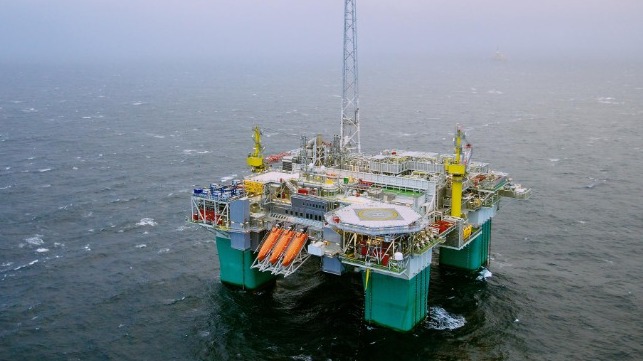Strike May Affect Eight Percent of Norway's Offshore Energy Capacity

The Norwegian Oil and Gas Association (NOG) warned Friday that a strike action by the managers' and technicians' union Lederne could affect production on six offshore oil fields beginning next week. If all were to go offline, it would represent a shut-in for 330,000 boepd of capacity on the Norwegian Continental Shelf - about eight percent of the total.
NOG successfully completed a contract negotiation with its two largest unions, Industri Energi and Safe, in discussions early last week. These two unions cover about 85 percent of the Norwegian offshore sector's workforce. However, Lederne broke off its mediation efforts on Wednesday morning, and its members on Equinor's new Johan Sverdrup platform halted work. The stoppage did not affect production at Johan Sverdrup, though project work has slowed, according to Equinor.
Lederne also warned that it if it does not reach agreement with NOG by midnight on Sunday, it will extend its strike to four additional platforms. These include Gudrun (Equinor, with 18 people affected), Gina Krog (Equinor, 18 people), Kvitebjørn (Equinor, 18 people) and Gjøa (Neptune Energy, 72 people).
According to NOG, this means that Kvitebjørn, its Valemon satellite field, Gudrun and Gina Krog will all have to shut down. Neptune’s Gjøa field will also have to shut down as a result of the walkout, including its Vega satellite.

that matters most
Get the latest maritime news delivered to your inbox daily.
In a statement Friday, NOG detailed its offer to Industri Energi, Safe and Lederne, including an overall pay increase of $500. According to Lederne leader leader Audun Ingvartsen, the strike comes not over the specific amount of pay, but "because we do not see the will to discuss an agreement for our members related to new forms of operation of the platforms."
Lederne wants to see collective agreement coverage for its members who will be transitioning to work in control rooms on land rather than on board oil platforms in the North Sea. According to NOG chief negotiator Jan Hodneland, such shoreside work "falls outside the scope of the negotiation over the offshore agreements.”
